Jump Square (December 2007)
Interview Archive

An interview with Hirohiko Araki taken from the January 2008 issue of Jump Square, published on December 4, 2007.
Interview
In honor of the one-shot's publication,
a Hirohiko Araki special feature!!
Rohan Kishibe's Stand, Heaven's Door, has novelized Mr. Araki with its power to turn people into books!! Let's take the opportunity to analyze his theory of manga! An interview with Mr. Otsuichi, who wrote a novelization of JoJo, is also present!!
For this work, you drew Rohan Kishibe, who appears in Part 4 of JoJo, as the protagonist. First of all, why did you choose to draw Rohan?
Araki: A long time ago, I wrote a one-shot called Thus Spoke Kishibe Rohan, which I've been meaning to turn into a series for a few years now. I already had that idea in mind when I was asked to write a short story for the second issue of Jump Square, so I figured I'd tell a story about Rohan. Mr. Otsuichi had just finished his novel, so it was quite timely. I didn't write it just to tie it into the novel, though (laughs).
What were your thoughts while drawing the one-shot?
Araki: Usually, I draw Steel Ball Run for Ultra Jump, and as the main character travels onward from the West Coast, I feel as though I'm traveling alongside him, so I get really tired. This story's setting is a two-hour drive from Morioh, but I like it. It feels like I'm coming home (laughs). What a relief.
So you were able to remain calm as you drew it?
Araki: Yes, I relaxed and had fun as I drew.
Would you say Rohan's your favorite character?
Araki: He played the part of the villain in his first appearance, but he had his own consistent sense of justice, and I liked how he stuck to it. He happens to have some abnormalities to him, but his character perfectly matches that of a protagonist.
What kind of person do you see Rohan as, Mr. Araki?
Araki: In a word, I admire him. He's a man who thinks about everything through the lens of his manga. He's willing to sacrifice so much for his manga, even his privacy and morals. But nonetheless, his manga's perfection comes first. Even if he has to hurt people, he puts his manga first. I like that part of his character.
So you just admire Rohan, and you don't actually act like him?
Araki: I'm bound by social constraints, so I can't act like him (laughs).
But as a creator, you do have a certain drive to pursue things you don't know in order to improve your manga, right?
Araki: Correct. For example, in my case, I like going to the mountains and looking for animal footprints or signs of feeding. Often, I look at traces of eaten tree roots or soil that's been dug up. I'm not really into hunting, but I do enjoy tailing animals, right up to the point where you're supposed to shoot them.
I also like tracking and watching the cats in my neighborhood. I know where and when they'll be passing through, so I lie in wait just ahead of them. The cats that show up look so shocked when I do that (laughs). I really love that feeling.
That's what you usually do?!
Araki: Yes. I like it when snakes show up (laughs). Snakes act like people. When they run away, they turn around once to make sure it's safe before they flee. That's why I think snakes have souls. They have their own wills. That piques my interest.
There was that story about mice in Part 4. It's no wonder you admire Rohan.
Araki: Exactly (laughs). I'd like to become a detective and tail people, too. It doesn't matter to me who the culprit is.
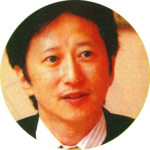
Now then, there are a surprising number of episodes featuring Rohan in Part 4. Were you particularly mindful of that?
Araki: I don't really feel as though I've drawn him that much. But he was useful when I needed to explain something. For example, he's able to calmly provide his strange opinions to Koichi. Koichi's a basic person whose positives and negatives even out, which makes Rohan's abnormality stand out even more.
Rohan's also easy to use in mental games. He's very particular about gambling, isn't he? Josuke might say something like, "Rock-paper-scissors is stupid. Count me out," but Rohan would probably fall for it. In the one-shot, the story only happens because Rohan investigates somewhere no one else would ever pay any mind.
Rohan's an easy character to manipulate, then?
Araki: I'd say so. His motives are always strange and fascinating. He doesn't care about money or fame or anything like that. He only acts for the sake of art, or rather, his work. There's a certain sense of reality to his abnormality, but something about him seems to transcend mere human greed. That's the thing I want to depict.
Next, I'd like to hear more about Part 4. Mr. Araki, what does Part 4 mean to you?
Araki: In short, the theme of Part 4 is "building a city." It drags the mythical story that JoJo's had up until Part 3 down into everyday life. It's ordinary, of course, but it's extraordinary at the same time. I wanted a sense of "reality" within Part 4, to bring the story closer to the real world. That's why a certain manga artist, whose profession I know best, and a certain chef from a local restaurant are also featured.
The year is 1999, and the fact that the setting is a small town also gives a sense of "reality."
Araki: You get the feeling that the town of Morioh actually exists. Part 4 had to end because Kira disappeared, but I really want to draw more of it. I want to put something else in that town, so I might draw it again someday... Maybe in Part 8 or 9 (laughs).
I'd definitely want to read that. Speaking of "reality," did you try to incorporate that in any other ways?
Araki: Don't think of them as hidden details, but I'd often consider aspects of the characters that I couldn't really show in the manga. For example, Josuke grew up never knowing his father, which truly pained him. But he covers up that pain by making a hero out of the man with a pompadour who saved him as a kid. He turns that man into someone he can rely on, a symbol of his beliefs.
I didn't include it in the manga, but Yoshikage Kira has a backstory as well. His mother was, in essence, abusing him, and his father always turned a blind eye to it. All the trouble he went through to save Kira was out of guilt for his negligence. That said, if I'd included that in the manga, Kira would end up being a tragic villain, and people wouldn't see him as the enemy. Maybe I couldn't depict that balance, or maybe it just wasn't possible in a shōnen magazine.
I see. But you don't need to draw that side of everyone to begin with, do you?
Araki: That's right. There's a set amount of space for the manga each week, so I can only draw so much. I'm constantly struggling against that. That said, when I draw manga, there's a certain sense of rhythm as I turn the pages. I try and cherish those ups and downs.
For instance, there are points where it's good to depict a character's state of mind, but there are also points where it's not. If you stop the story for that at those points, it disrupts the rhythm of the work, and the reader might stop reading there. That said, there are those points where the psychology is welcome, and I really do want to add those depictions there.
You even think about the rhythm the reader uses as they read.
Araki: There's a similar rhythm in novels and movies as well, but you can only draw manga if you really understand of its unique rhythm. If I couldn't perceive that rhythm, I think the work would've turned out very differently. I feel a certain rhythm when I draw, something akin to music. And that music flows through the manga, too.
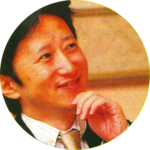
Reading JoJo, you can't help but notice that some scenes are directed like a Western film.
Araki: I've heard that from people before, but I don't pay much attention to it. It happens inadvertently (laughs). Though, I love suspense and horror, so I do try to draw stories based around them. Rather than uncovering who the culprit is, for example, I want to depict how the culprit gets away.
That also ties into the detective topic we talked about earlier. Do you tend to think of "roles" for each character?
Araki: I do. I mentioned Rohan's earlier, but in Koichi's case, for example, I liken his narrating to Dr. Watson from Sherlock Holmes, which I adore. Whenever a narrator like him speaks, I can't help but get excited. Part 4 ends with Koichi, whose role continues into the start of Part 5. It's like Koichi's another protagonist within Part 4. I don't think Josuke cares about Rohan at all, for example, but the two only get along because of Koichi. I thought it'd get boring for the readers if Koichi didn't have a Stand, so I made him a Stand user. But he's still an important character, a reference point of normality in the midst of abnormal people.
You mentioned Stands just now. How do you come up with each Stand?
Araki: I think about the combination of the ability, the name, and the design. I want the character's attitude toward life to flow through all of that. Everything has to be connected. Also, some Stands stem from my own image of a potential drawing.
The Stands aren't the only distinctive element in your work. There's also the way the characters speak their lines.
Araki: It seems like some people have lines they really like, even if they themselves can't remember them (laughs). I don't put much thought into the lines. I'm so careless with those (laughs).
Is that so?
Araki: There are quite a few times where I only say a line works because I'm low on pages. So when someone tells me that line's cool, I just think, "Huh?!" I can never tell what they see in it. Different people see all sorts of different things, which keeps it fresh enough. It's so utterly unpredictable that I have to be careful when I draw them (laugh).
Are you going to keep drawing JoJo one-shots like this one?
Araki: As long as everyone says they want to read them, I'll happily keep drawing them.
Do you have any other ideas to work from?
Araki: Nothing's set in stone yet, but I do have some lying around.
Please provide a few words for the fans who will be reading the one-shot soon.
Araki: Of course. This work depicts a "strange everyday" in the midst of normal life, so please make sure you read it. I think you'll understand what I mean by a "strange everyday" after the first page.
After over two thousand days of planning and writing, the genius Mr. Otsuichi has risen to the challenge of novelizing Part 4 with The Book: jojo's bizarre adventure 4th another day!! To commemorate the book's completion, we've arranged a special talk between Mr. Araki and Mr. Otsuichi!
The novelization of Part 4 has finally released!!
JoJo's Bizarre Adventure Part 4 takes place in Morioh! Set in 1999, the story follows Josuke, who wields a supernatural power called a Stand, as he takes on the serial killer Yoshikage Kira alongside his friends. The novelization, The Book, begins after the Kira incident is resolved, when a strange murder occurs in Morioh...
What did you think of The Book, Mr. Araki?
Araki: The ending struck a chord with me. The suspense and excitement are resolved with a bang, and then there's a sad, painful ending. It's perfect for both Morioh and Otsuichi. It has the kind of ample feeling you can't get from a happy ending.
Otsuichi: "Ample feeling..." I like that.
Araki: All the characters from Part 4, including Okuyasu and Josuke, are portrayed in depth. It might be better than the original work.
Otsuichi: That's good... I'm happy to hear that. At first, I was only planning to include Josuke, but I started to think that JoJo fans wouldn't be satisfied if I went through with that. So I tried to include as many characters as I could.
Araki: How old were you when Part 4 released?
Otsuichi: I was in middle school. I remember talking with a friend about how "Part 4's just started." I incorporated those memories of mine into the novel, as well as some of the comments Mr. Araki wrote in Weekly Shonen Jump's tables of contents. I had a lot of fun, thinking, "This is alright, right? If my editor says no, I'll just take it out." I enjoyed sprinkling in some material that only JoJo fans would understand. It was like I was writing a doujinshi. Mr. Araki asked me to include some of the famous places in Morioh, so I did my best with that as well.
Araki: It's nice that those famous places from the original work are mentioned so casually. People who don't know them can keep reading, and readers who do become more engrossed in the story.
Are the Stand abilities in the story Mr. Otsuichi's original ideas? (Read the novel for more information!)
Otsuichi: They are.
Araki: Stands always reflect one's attitude toward life. For that reason, unless you come up with it yourself, you probably can't understand what makes a Stand so great. It's great when the person who depicts them can think, "This is amazing!"
Otsuichi: "Stands reflect one's attitude toward life..." That's a good saying.
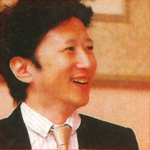
The Book is set in Morioh in winter. Why did you choose winter as the season?
Otsuichi: There were hardly any winter scenes in the original work, so I decided to set it in winter as a contrast.
Araki: Come to think of it, I didn't draw a lot of winter. For the first time in a long while, my one-shot for Jump Square is set in Japan. Reading The Book reminded me what Morioh was like, so it ended up influencing me.
Otsuichi: Morioh is simply amazing. Even as I was writing, I thought, "I want to live there."
You two first met in a special talk for Yomu Jump (December 2002), right?
Otsuichi: It's already been five years or so since then. Before I met Mr. Araki, I had the image of Rohan Kishibe in mind. I was so nervous that I could feel my legs shaking... Although, I'm still so nervous I can't read the tea menu in front of me...
Araki: Don't be nervous (laughs). What'll become of The Anatomy Lesson of Dr. Tulp (another version of Part 4's novelization) as it appeared in Yomu Jump?
Otsuichi: What'll become of it, indeed... I'd like to rewrite it someday, if I get the chance. I tried rewriting it so many times, but it just didn't work out. Around three years ago, I told my editor, "Let's just put this version aside for now, rethink the premise, and rewrite it from the ground up." Back during that interview, Mr. Araki gave me an autographed illustration of Josuke, which I placed on my desk while I wrote.
I've heard you scrapped over 2,000 pages of manuscripts, including Dr. Tulp.
Otsuichi: I just couldn't move JoJo's characters freely, and I had the strange feeling that I could only write them as puppets... I had to think it over again and again, and I scrapped it so many times and tried to come up with a strategy. I figured it'd be a once-in-a-lifetime opportunity, and I knew that if I published a book based on a manuscript I wasn't happy with, I'd regret it for the rest of my life. So I just kept having to apologize to all parties, and the book remained unpublished for so long.
Araki: But I think it was all worth it. It really did become a great book in the end.
Otsuichi: Mr. Araki also drew the frontispiece and illustrations for The Book. I'm really happy to be able to see Part 4's characters in his current style.
Araki: I was careful about the sense of the ordinary in the illustrations. The story's set in Morioh during the winter, so I added snow falling in the background. The original enemy in the novel fights Josuke and his friends, but he's not a "powerful evil villain" or anything like that. He's like another protagonist living in the town, and he has a proper life story. I paid close attention to the "reality" of that.
Otsuichi: The illustrations were all better than I could've imagined. The pop-up illustration you made for the frontispiece is amazing, too...
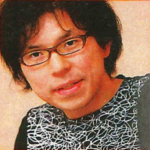
It's a gimmick where Josuke and company stand up as you open the book.
Otsuichi: I like how they stand against the backdrop of the town.
Araki: It's been so long since I last drew Part 4's characters. It's like old acquaintances have come to visit, so I feel a sense of nostalgia, or rather, extreme happiness. I'm truly grateful for that.
I know the novel just came out, but what about the sequel? Or, since Mr. Otsuichi loves movies, maybe he could write a screenplay and turn JoJo into a live-action film.
Araki: A live-action film would be nice.
Otsuichi: No, no, it'd be too humbling to write the script for that. Also, what about Josuke's hairstyle...?
Araki: If he was played by a cool person, it'd become cool, too (laughs).
Mr. Otsuichi, who's your favorite character in Part 4?
Otsuichi: Yoshikage Kira, of course. He's a villain and a serial killer, but his desire to live out his life in peace is devastating. I can empathize with him.
As a novelist, what do you think is the essence of JoJo?
Otsuichi: I think that varies from person to person. But to me, it's the direction. In a normal manga, there are scenes that surprise the reader with a sudden reveal. But in JoJo, it's like the edges gradually solidify before the reveal, which is a thrilling feeling. I love those kinds of surprising twists, and I feel total bliss when reading those moments in JoJo.
Araki: Thank you so much. But I'm so careless with that (laughs).
Mr. Otsuichi, what's your personal image of Mr. Araki?
Otsuichi: The other day, I went to a party at Araki's house, and I was amazed at just how many friends and connections he had. It was like he was a gang boss.
Araki: From my own point of view, Mr. Otsuichi is just as delicate as his works. I think Rohan Kishibe's closer to him than he is to me. I'll incorporate him into Rohan's model from now on (laughs).
Otsuichi: The Rohan fans won't be happy...
The Book's cover design is also very different from previous novelizations.
Araki: I thought it'd be good to have a design that gives off the ambiance of Morioh as a whole. Usually, the cover would just be an illustration of Josuke, but I wanted to do something different. Once I read the novel, I knew it had to be this one. I was convinced. The Stand that appears in the novel also takes the form of a book, so instead of a flashy cover, I wanted the cover to be a simple one that brought out a sense of depth.
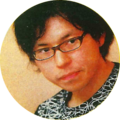
Otsuichi
Otsuichi was born on October 21, 1978 in Fukuoka Prefecture. He made his debut as an author at age 17 with Summer, Fireworks, and My Corpse, winning the 6th Jump Novel and Nonfiction Award. He first encountered JoJo when he was in second grade: "In Part 2, there was a really scary scene where Santana escaped through an air vent. That was the first time I was really aware of what JoJo was, and I remember reading that chapter over and over again."
Light Novel
JoJo's Bizarre Adventure: The Book
jojo's bizarre adventure 4th another day
Otsuichi's novelization of JoJo Part 4, with illustrations from the original author, Hirohiko Araki! Araki's frontispiece even has a pop-up mechanism! When Otsuichi first saw the original art, he was captivated and exclaimed, "Ah! The original manuscript!!", just like Koichi when he saw Rohan's manuscript!! The book, designed after the image of the Stand seen within, is a B6 hardcover on sale now for 1,575 yen (1,500 yen before tax)!! For more information on this must-read book for JoJo fans, please visit http://j-books.shueisha.co.jp/jojo20th/!
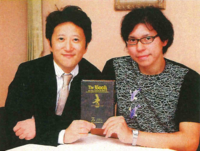
Inside Mr. Araki's head as opened by Heaven's Door, we found information about Rohan himself! In addition to his profile and brief history, exclusive production notes have also appeared... Let's discover Rohan's secrets alongside Rohan himself, the one who turned Araki into a book!!
- 1979: Rohan was born.
- August 13, 1983: Stayed overnight at Reimi Sugimoto's house.
- Lived in Morioh until around 1983.
- 1995: Debuted as a manga artist at age 16.
- February 1999: Moved into a seven-bedroom house in Morioh.
- February 1999: Shot by Keicho Nijimura with an Arrow.
- May 1999: Met Koichi Hirose for the first time.
- Around June 1999: Pink Dark Boy went on hiatus for around a month.
- Around July 1999: House partially burned down, causing seven million yen's worth of damage.
- 2007: Visits Mutsu-kabe Hill in pursuit of reality.
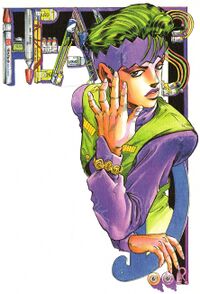
- Name: Rohan Kishibe
- Born: 1979
- Age: 20 (First appearance)
- Occupation: Manga artist
- Signature work: Pink Dark Boy (currently serialized in Weekly Shonen Jump, with editions published in Taiwan and Europe)
- Assistants: None
- Blood type: B
- Birthplace: S City, M Prefecture
- Current address: Secret
- Phone number: Secret
- Personality: Selfish, egoistic
- Friends: Koichi Hirose
- Stand: Heaven's Door
- Ability: Can turn anyone who reads Rohan's manuscripts into a book. The book contains all of the person's memories and personality. By adding new details in the margins, Rohan can limit their actions. He can also rip pages out of the book, causing the victim's weight to decrease proportionally. However, he cannot read his own memories or fate. (Later, as his ability grows, Rohan is able to activate it by simply showing his target a picture drawn in mid-air, rather than a manuscript.)
- The name has no particular origin. I borrowed it from the author Kōda Rohan because I liked the way the word sounded. I remember "Kishibe" being the name of my hometown or something like that, but there's no deeper meaning to it.
- The ability's name is taken from the famous song by Bob Dylan.
- Rohan's serialization, Pink Dark Boy, is a suspense manga that blends fantasy with reality. It's like JoJo within JoJo. It is planned to release in nine parts, and it would seem (according to Otsuichi's idea) that Part 4 is currently being serialized.
- Since Rohan's also a manga artist, some people claim he's a projection of myself, but I simply used the occupation I know best to give him a sense of reality. I'd never say the crazy things he does.
"By the way, the thing he's wearing on his head is a hairband," Araki says.
[Translated by MetallicKaiser and HudgynS (JoJo's Bizarre Encyclopedia)]
奇才・荒木飛呂彦が露伴の手で本になった!!?
読切掲載記念!
荒木飛呂彦特集!!
人間を本にする岸辺露伴のスタンド『
――今回、『ジョジョ』第4部に登場する岸辺露伴が主人公の短編を描かれていますが、まず、なぜ露伴の話になったんですか?
荒木 前に一度『岸辺露伴は動かない』という読切があって、数年前からそれをシリーズで何作か描きたいってずっと思ってたんですよ。今回、「ジャンプ
――読切を描かれた感想はいかがでしょう?
荒木 普段は「ウルトラジャンプ」で『スティール・ボール・ラン』をずっと描いていて、西海岸から主人公が旅をしていると、自分も一緒に旅をしている感じで疲労感とかがすごい溜まっていくんですよ。今回の話の舞台は杜王町から車で2時間の所なんですが、いいんですよ、家に帰ってきたみたいで(笑)。ホッとするんですよね。
――では落ち着いて描けたんですか?
荒木 そうですね。リラックスしながら楽しんで描けました。
――露伴は先生お気に入りのキャラクターなんですか?
荒木 彼は初登場時は悪役のような立場だったけど、彼なりに考えている正義みたいなものは一貫してあって、それを貫いていくところが気に入っています。異常性も持ち合わせているんですが、主人公にピッタリのキャラクターですね。
――ではそんな露伴はズバリ、荒木先生から見てどんな存在ですか?
荒木 一言で言うと「憧れ」なんですよね。全部漫画を中心に物事を考えていられる男なんですよ。そのためにはいろんなことを犠牲にできる。例えばプライバシーとか道徳的なところまで。それでも彼は漫画の完成度を優先するわけですよ。たとえ人が傷ついてもそっちのほうを優先します。そのキャラクター性はいいですよね。
――でもそれはあくまで憧れであって、露伴のように行動はしないということですか?
荒木 僕は社会的な制約がありますんで、ヤツみたいには行動できないですね(笑)。
――でも作家さんという職業柄、漫画をより良いものに仕上げるために、知らないものを追究していく気持ちはありますよね。
荒木 それはありますね。例えば僕の場合だと、山に行って動物の足跡とか何か食べた痕だとかを探すのが好きなんですよ。よく動物が木の根っこを食べた痕や、土を掘った形跡を探したりします。ハンターにはなりたくないけど、撃つ手前ぐらいまでは追跡したいと思いますよ。それから、近所のネコとかを追跡して観察したりもするんです。「ここを通ってるな」ってわかるから先で待ち伏せしてるんです。そうすると出てきたネコがビックリするんですよ(笑)。あの感じは大好きなんですよね。
――普段そんなことをされてるんですか!?
荒木 そうそう。あとヘビが出てきたりすると嬉しいですよね(笑)。ヘビって人間的な行動をするんです。逃げるときは一度後ろを向いて安全を確認してから去って行くんですよ。だからヘビには魂が宿っていると思うんですよね。なんか意志がある。そういうところに興味が沸きます。
――第4部にはネズミのお話もありましたし、さすが露伴に憧れているだけありますね。
荒木 そうですね(笑)。それから、刑事になって人を尾行とかもしたいですよ。犯人はどうでもいいんです。その手がかりを追う過程が楽しいんです。

――さて、第4部には露伴が登場するエピソードが意外と多いんですが、特に意識はしてたんですか?
荒木 そんなに描いてる感じはあんまりないですけどね。ただ、何か解説するときに便利なキャラではあります。例えば康一くんに対しては冷静な、しかし異常な意見を言うんですよ。康一くんはプラスマイナスゼロの基本的な人だから、露伴の異常さが際立ちますよね。あと、知的ゲームのときに露伴が使いやすいんですよ。博打的なところにこだわるじゃないですか。仗助だったら「ジャンケンなんてバカバカしくてやれねえ」なんて言うかもしれないけど、露伴だったら乗りそうですよね。今回の読切も、露伴だったからこそ他の人は誰も注目しないような所に取材に行くという話になっています。
――じゃあ先生にとって露伴は動かしやすいキャラなんでしょうか?
荒木 そうですね、常に動機も異常で面白いですし。彼にはお金とか名誉とかそんなものは関係なく、ただ芸術のために、作品のために動くんです。異常さにもリアリティーを持たせてはいますが、人間の欲を超越した何かが。あるんですよ、彼には。そういうところを描きたいですね。
――次に、第4部について詳しく教えていただきたいのですが、荒木先生の中で第4部とはどういう作品なんですか?
荒木 第4部のテーマを一言で言うと、「街を作る」ということ。そして第3部まで神話的な話が続いた『ジョジョ』を日常まで引き降ろすということです。もちろん日常でありながら非日常なんですが。話を日常により近づけるため、第4部にはリアリティーが欲しかったんですよ。なので自分の最もよく知る職業である漫画家や、身近なレストランのシェフだとかも登場するんです。
――年代も1999年ですし、舞台が「街」であることもリアリティーを感じさせますね。
荒木 杜王町という街が実際にそこに存在してる感じがありますよね。第4部は、吉良がいなくなったからあそこで終わりにしたけど、本当はもっと描きたいんですよ。あの街に何かを投入したいです。だからまたいつか描きたいと思っています。第8部とか第9部とかで(笑)。
――それはぜひ読みたいですね。リアリティーというと、そのほかにも何か工夫はされているんてすか?
荒木 裏設定ではないですけど、漫画ではあまり描かなかったキャラクターの一面を考えてはいます。例えば仗助は、自分の父親を知らずに育ち、実はそこで傷ついてるんです。だけど、幼い頃助けられたリーゼントの男を自分の中でヒーローにして、頼ったり、自分の信念のシンボルにしたりしてその傷をカバーしているんです。実はマンガでは描かなかったけど吉良吉影の背景もあるんですよ。吉良の母親か虐待みたいなことをしてて父親は見て見ぬフリで、それを「すまない」って思っていたから吉良をあそこまで救おうとしてたっていう。ただマンガでそれをやっちゃうと悪役としては悲しいヤツになるし、敵にもならないし。そこの兼ね合いは描けなかったっていうか、少年誌だからできなかったのかな。
――なるほど。しかし、必ずしも全員のそういった一面を描くわけではないですよね。
荒木 そうですね。漫画には毎週決められた面積がありますから、一定量以上は描けないんですよ。そことの戦いは常にありますね。だけど漫画を描くときに、どんどんページをめくっていくリズム感があるじゃないですか。そういう起伏を大事にしようと心がけているんです。例えば、そこに心理描写を入れて良い場所とダメな場所があるんですよ。そこで話の流れを止めちゃうと、作品のリズムが壊れたり、読者が読まなくなったりする場所があります。でも逆に、心理描写を描いてもいい場所っていうのもあって、そこではそういう描写をすごく描きたいと思うんです。
――読者が漫画を読むリズムまで考えているんですね。
荒木 小説にも映画にもあると思いますが、そういう漫画ならではのリズムをちゃんと分かっていると描ける。逆にリズムを読めていなかったら違う作品になっちゃうと思うんです。僕が描いている時はリズムというか、音楽に近いものがありますね。漫画にも音楽が流れているんですよ。

――『ジョジョ』を読んでいると、まるで洋画を見ているような演出のシーンも出てきますよね。
荒木 そう言われることもあるんですが、こちらはあまり深く考えてないんですよ。何気なくやってます(笑)。でも、実はサスペンスとかホラーが好きなので、ストーリー面ではそれらをベースにしたものを描きたい。例えば、犯人が誰なのかということよりも、犯人がどうやって逃げるのか、そっちを描きたいですね。
――先程の刑事の話にも繋がってきますね。キャラクターによって役割みたいなものは考えるのですか?
荒木 そうですね。露伴については、さっき言った通りだし、例えば康一くんなんかは、僕の好きな『シャーロック・ホームズ』のワトソンさんが語っていく感じをイメージしています。ああいう語りの人が出ると、自分でもなんかワクワクするんです。第4部の最後も康一くんで終わっているし、それが第5部にも続いています。康一くんは第4部のもうひとりの主人公みたいなものですね。例えば仗助はまったく露伴に興味がないと思うんですが、康一くんがいるから付きあってる感じはあるんじゃないですかね。康一くんもスタンドを使わないと読者的につまらないかと思いスタンド使いにしましたけと、異常な人たちの中で基準となる重要なキャラクターですね。
――スタンドのお話が出ましたが、スタンドはどうやって考えているんですか?
荒木 能力と名前とデザイン、全部を一緒に考えます。それら全ての中にヤツらの人生観が流れていて欲しいんですよ。全部がつながってないとダメですね。あと、絵のイメージから来るスタンドってのもあります。
――先生の作品の場合、スタンドもそうですが、セリフの言い回しも特徴的ですよね。
荒木 人によってはすごく気に入ったセリフがある人もいるみたいですけど、当の本人は覚えてないこともあります(笑)。考えて描いてないんですよね、超いい加減ですよ(笑)。
――そうなんですか?
荒木 ページ数がないからこのセリフでいいや、みたいなのが結構あります。だから、「セリフがかっこいい」とか言われると、「え~?」って思うんですよ。そんなとこ見てたんだ、みたいな。見ている人によってはいろんなところを見てるから結構新鮮ですね。超テキトーなので、気をつけて描かなきゃ(笑)。
――今後も今回のような『ジョジョ』の読切を描いていくことはありますか?
荒木 みなさんが読みたいと言ってくれれば、喜んで描きますよ。
――何本かアイディアはあるんですか?
荒木 まだわからないですけど、ぼちぼちはあります。
――これから読切を読むファンにむけて先生から一言お願いします。
荒木 そうですね。日常の中の「奇妙な日常」が描かれていますので、ぜひ読んでみてください。1ページくらい読めば「奇妙な日常」とは何なのかすぐにわかると思いますよ。
対談! JOJO 荒木×乙一
構想・執筆2000日以上、鬼才・乙一先生が挑んだ第4部ノベライズ『The Book jojo's bizarre adventure 4th another day』が完成!!これを記念して荒木飛呂彦先生と乙一先生の対談が実現した!
ついに発売された小説版 『ジョジョ』第4部!!
『ジョジョの奇妙な冒険 第4部』の舞台は杜王町ッ! 時は西暦1999年、スタンドという超能力を持つ主人公・東方仗助らが、連続殺人犯の吉良吉影に挑む物語だ。今回のノベライズ『The Book』は吉良の事件解決後の杜王町で、奇怪な殺人が発生するところから始まる――。
――『The Book』を読まれて荒木先生はいかがでしたか?
荒木 ラストシーンがグッと来るんですよ。サスペンスがあって盛り上がって、その解決がガーッとあって、悲しくて切ないラストがある。杜王町にぴったりだし乙一さんにぴったりだし。ハッピーエンドとは違った豊かな感じがあるんですよ。
乙一 …「豊かな感じ」…いいですね。
荒木 億泰とか仗助といった4部の各キャラクターたちが深く描かれていて、原作よりいいかもしんないですね。
乙一 良かった…。うれしいです。最初は仗助だけを出す予定で書いていたんですが、それだと『ジョジョ』ファンが納得してくれないんじゃないか、と思い始めて。出来る限り多くのキャラクターを出そうとしました。
荒木 4部の頃って何歳だったの?
乙一 中学生です。友達と交わした「今度は4部が始まるんだよ」という会話も覚えています。小説ではそういう自分の思い出を入れたり、荒木先生が少年ジャンプの目次に寄せていたコメントを入れてみたり。「大丈夫かなー。担当編集さんのNGが出たら消そう」と思いながら遊びを入れました。『ジョジョ』ファンだけに判るようなネタを散りばめてみたんですが、そういうところが面白かった。同人誌を書いている気分でした。荒木先生からは「杜王町の名所を出してほしい」というリクエストがあったので、そこも頑張りました。
荒木 原作で出た名所が何気なく出てくるのがいいんですよ。知らない人も読めるし、知ってる読者はのめり込めるし。
――劇中のスタンド能力(詳細は小説を読んでくれッ!)は乙一先生のオリジナル?
乙一 そうですね。
荒木 スタンドって必ず自分の人生観が入ってくるんですよ。だから考えた本人じゃないと、たいした技に思えないんじゃないかな。描く本人が「こりゃスゴイ」って思ったのがいいんだよね。
乙一 「スタンドが人生観を反映している」…、これもいい言葉ですね。

――『The Book』は冬の杜王町が舞台ですが、季節を冬にした理由は?
乙一 原作では冬のシーンがほとんどなかったので、逆に冬にしてみたんです。
荒木 そういえば冬って描いてなかったね。今回の「ジャンプ
乙一 杜王町はすごいですね、書いていて「住みたい」と思いました。
――お二人が最初に会ったのは「読むジャンプ」(2002年12月発売)の対談ですよね?
乙一 もう5年くらい前になりますね。荒木先生とお会いする前はやはり岸辺露伴のイメージがありました。とにかく緊張して足が震えそうでした。…じつは今も緊張していて、お茶のメニューの文字が読めない…。
荒木 キンチョーしないでよー(笑)。「読むジャンプ」に載った「テュルプ博士の解剖学講義」(注・第4部の小説の別バージョン)はどうなるの?
乙一 どうなるんでしょうか…。いつか書き直しをさせてもらえるなら、やりたいのですが…。何度も書き直しをしたんですけど上手くできなくて。「あのバージョンはひとまず置いといて、根本から考えなおした設定でやりなおさせてください」と担当編集さんに話をしたのが3年くらい前の話です。対談の際に仗助が描かれたサイン色紙を荒木先生に頂いて、それを机に置いて執筆していました。
――没にした原稿が2000枚以上あると聞きましたが、その中に「テュルブ博士」も入っているわけですね。
乙一 『ジョジョ』のキャラクターを自由に動かせていないというか、操り人形しか書けていない違和感がずっとつきまとっていて…。それで、いろいろと考える必要があると思って自分で何度もボツにして作戦を練っていました。こういうことをできるのは一生に一度なんじゃないかと思うと、納得できない原稿で本を出すのは一生後悔しそうだったので、各方面に頭を下げて本が出ない状況が続きました。
荒木 でも、その甲斐はあったと思うよ。たしかにすごい本になってる。
乙一 今回の『The Book』では荒木先生に口絵や挿絵も描いて頂いたんですが、今の絵柄で4部のキャラを見られるのは、すごくうれしいです。
荒木 挿絵で気を使ったのが日常性なんですよ。冬の杜王町が舞台なんで背景に雪を降らせてみたり。小説オリジナルの敵も仗助たちと戦うけど、でも「悪くて強い敵」っていう感じじゃない。「町の中にいる主人公」っていう感じで、ちゃんと人生の背景がある。その辺のリアリティとかは注意しました。
乙一 どのイラストも僕のイメージ以上でした。それと巻頭口絵で描いて頂いた飛び出すイラスト、これがまたすばらしい…。

――本を開くと仗助たちが立ち上がるギミックですね。
乙一 町を背景に立ち上がるのがいいですね。
荒木 4部のキャラクターたちを久しぶりに描いて、昔の知り合いが遊びに来てくれた感じがあって懐かしいっていうか超うれしいっていうか。本当に有り難いです。
――小説が出たばかりですが、第2作とかどうですか? あるいは乙一先生は映画がお好きとのことなので、シナリオを書いて『ジョジョ』実写映画化とか。
荒木 実写になってもいいですよね。
乙一 いやー、僕が脚本は恐れ多いです。それに仗助役の人の髪型をどうするとか…。
荒木 カッコいい人がやればカッコ良くなるよー(笑)。
――乙一先生が4部で好きなキャラクターは誰ですか?
乙一 吉良吉影ですね。連続殺人犯の悪役なんですが、とにかく平穏に人生を終えようというその思想が衝撃的で、僕の人生にも馴染んだところがあって。
――小説家という立場から見て、『ジョジョ』のキモはどこだと思いますか?
乙一 それは人それぞれ違うと思います。が、僕の中では演出です。普通のマンガならいきなり見せて読者を驚かす場面でも、『ジョジョ』は少しずつ周辺を固めてから提示するような、ゾクゾクする感じがあります。そういうビックリするような仕掛けがすごく好きで、『ジョジョ』を読んでいて至福を感じる時ですね。
荒木 ありがとうございます。でも何気なくやってんだけど(笑)。
――乙一先生から見た荒木像は、どういった感じなんでしょうか?
乙一 先日、荒木先生のお宅のパーティーにお邪魔したのですが、お友達や人脈の広さがすごかったです、ギャングのボスみたいだと思いました。
荒木 僕から見た乙一さんはね、作品通り繊細な感じでどっちかっていうと岸辺露伴は乙一さんのほうが近いんじゃないの? これからモデルの一部として取り入れさせてもらいますよ(笑)。
乙一 露伴ファンに怒られます…。
――この『The Book』は、カバーデザインも従来のノベライズとは趣が違いますね。
荒木 「杜王町全体の雰囲気を押し出すデザインがいい」と思っていました。普通は仗助のイラストが表紙に来ると思うんだけど、そうじゃないふうにするっていうか。小説を読んだら絶対こっちだなと思いました。そう決断したんです。出てくるスタンドも本の形だし、派手というよりはシンプルに行って、そこで奥深さを出したいという感じですね。これ、いい本だと思いますよ!

乙一(おついち)
作家。1978年10月21日、福岡県生まれ。17歳の時に『夏と花火と私の死体』で第6回ジャンプ小説・ノンフィクション大賞を受賞して作家デビュー。『ジョジョ』との出会いは「小学2年生の頃です。第2部で、サンタナが通気口から抜け出してくる超怖いシーンでした。それが最初に明確に『ジョジョ』を意識した時で、その回を繰り返し読んだ記憶があります」(乙一)
小説単行本
ジョジョの奇妙な冒険“The Book”
jojo's bizarre adventure 4th another day
著:乙一/原作・イラスト:荒木飛呂彦による『ジョジョ第4部』のノベライズだ! 荒木先生描き下ろしの巻頭口絵はイラストが飛び出す仕掛け付き! 挿絵原画を見た乙一先生は、露伴の原稿を見た康一くんの如く「ああっ、生原稿ですよー!!」と引き込まれていたッ!! 単行本は劇中のスタンドをイメージした装丁でサイズは四六判、ハードカバー、定価1575円(本体1500円+税)で発売中!! 『ジョジョ』ファン必読の本書の詳細は
http://j-books.shueisha.co.jp/jojo20th/

岸部露伴
『
- 1979年 誕生。
- 1983年8月13日 杉本鈴美の家に外泊。
- 1983年頃まで杜王町で暮らす。
- 1995年 16歳で漫画家としてデビュー。
- 1999年2月 杜王町へと引っ越す。家は7LDK+屋根裏部屋。
- 1999年2月 虹村形兆に「矢」で射られる。
- 1999年5月 広瀬康一に初めて出会う。
- 1999年6月頃 『ピンクダークの少年』1ヵ月あまり休載。
- 1999年7月頃 自宅が半焼し700万円の損害。
- 2007年 リアリティー追究のため「六壁坂」へ向かう。

- 氏名:岸辺露伴(きしべろはん)
- 生年:1979年
- 年齢:20歳(初登場時)
- 職業:漫画家
- 代表作:『ピンクダークの少年』(週刊少年ジャンプ連載。台湾版とヨーロッパ版も出版されている)
- アシスタント:なし
- 血液型:B型
- 出身地:M県S市
- 現住所:秘密
- 電話番号:秘密
- 性格:わがまま・エゴイスト
- 友人:広瀬康一
- スタンド:『天国への扉』(ヘブンズ・ドアー)
- 能力:露伴が描いた原稿を読んだ者を本にする。本にはその人の記憶や性格などがすべて書き込まれていて、余白部分に新たな事項を書き加えることによって、行動を制限することも可能。また、本のページを破り取ることもできる。その場合、取られた分だけ対象者の体重も落ちる。ただし、自分の遠い記憶と運命は読めない。(のちにこの能力は成長し、原稿を見せなくとも空中に描いた絵を見せるだけで発動するようになった。)
- 名前の由来は特にないが、語感から作家・幸田露伴の「露伴」を拝借。「岸辺」は僕の故郷の地名か何かから引用した記憶があるが、深い意味はナシ。
- 能力名はボブ・ディランの名曲に由来。
- 露伴が連載している『ピンクダークの少年』は…ファンタジーとリアリティーが融合しているサスペンス漫画。いわば、『ジョジョ』内の『ジョジョ』みたいなもの。第9部まで着想があり、現在第4部までいっているらしい(乙一先生のアイディアによる)。
- 露伴は漫画家という職業なので、僕自身が投影されているのでは、との声もあるが、リアリティーを出すために自分が最もよく知る職業を出しただけ。僕は決して彼のような超ヤバいセリフは言いませんからね。
ちなみに「彼が頭に装着しているのはヘアバンド」とのこと。
